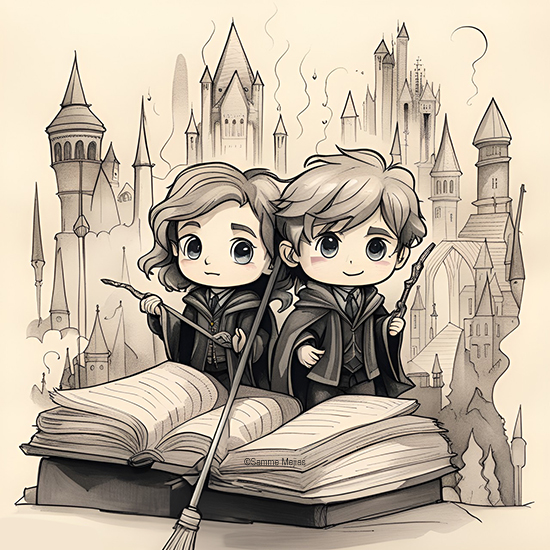Ever since I closed the last page of The Hobbit by J.R.R. Tolkien, I have been longing to return to Middle-earth with my kids. We’re currently on a new adventure with The Fellowship of the Ring, the first part of The Lord of the Rings Trilogy. I know how the story ends, of course, because I read Tolkien’s masterpieces years ago. But I reread them for my sons, who are discovering this world for the first time. It feels different when you’re reading with kids as curious as my boys than reading the book alone. They ask me questions, make predictions, and share their opinions. We talk about it every night before they drift off to sleep. I see their frustrated reactions when there’s a cliffhanger, but then I have to stop because they have school the next day. Yep, instead of children’s books, I read them my favorite novels because I want them to experience the magic, the wonder, and the emotions I had while reading them. And we get to talk more about it while dining together or while driving around. It’s fun and it’s a precious bond that we share while they’re still young and eager for my attention.

Actually, we have a special treat planned once we finish the entire Lord of the Rings books. We are going to visit Hobbiton, the real-life movie set of the Shire. They are so excited, but I don’t know if we’ll be able to finish the whole series this year. It’s because I’ve been swamped with work lately and they just started another school year. But we’ll try to finish the books as soon as possible because we can’t wait to see the hobbit holes, the Green Dragon Inn, and the Party Tree.
Hobbiton and Beyond

J.R.R. Tolkien’s timeless fantasy masterpiece, “The Hobbit,” made its debut in 1937, enchanting readers with the captivating tale of Bilbo Baggins, a hobbit contentedly ensconced in the comforts of his hobbit-hole, Bag End. However, his tranquil existence is abruptly disrupted when Gandalf, a wizard of enigmatic allure, arrives accompanied by a band of thirteen dwarves. They extend to Bilbo an invitation that propels him into an unexpected journey: to aid them in reclaiming their lost treasure from the clutches of the formidable dragon, Smaug. Despite his initial reluctance, Bilbo embarks on an adventure that will irrevocably transform his life.
Read More »











